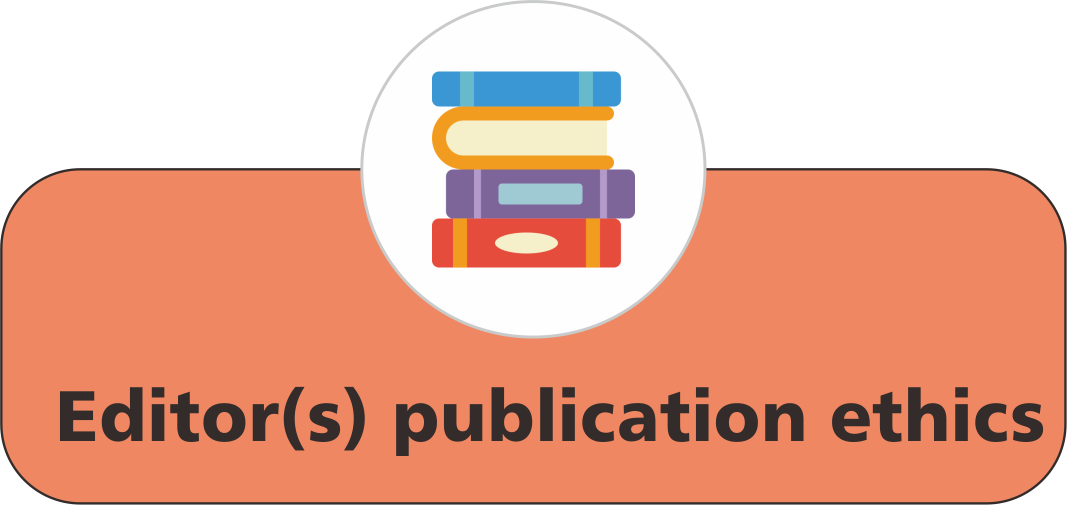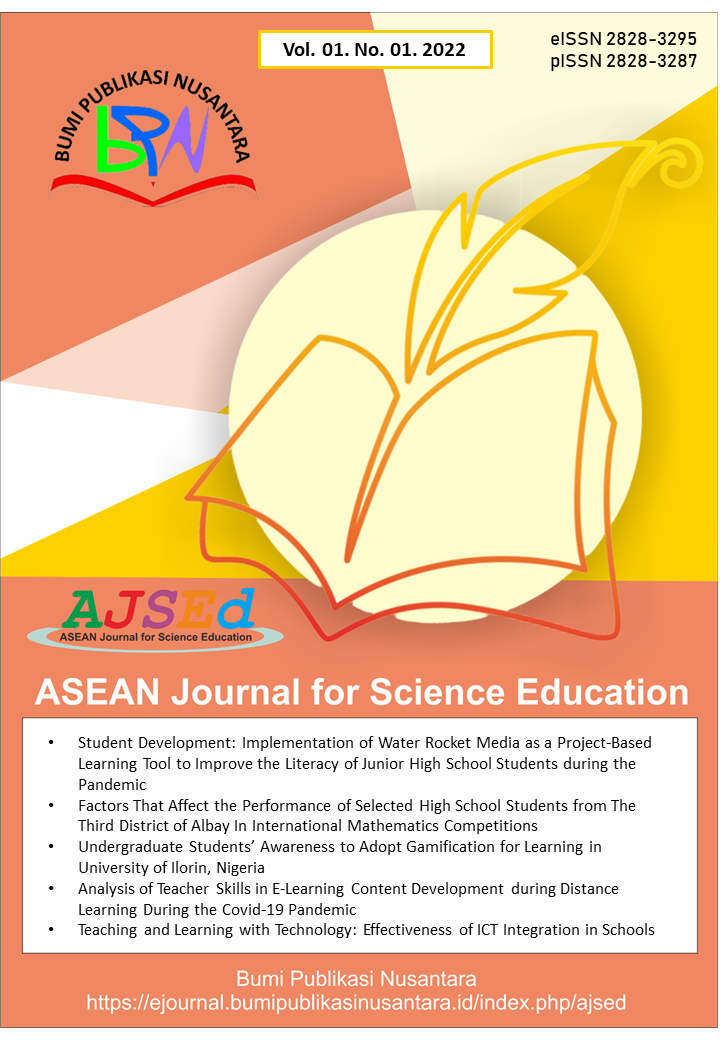Science Education Research Methodology: A case study investigating the correlation between construction, safety, accident, and the effectiveness Construction Industry Development Board (CIDB) Green Card Training Program
 ), Nik Hasnaa Nik Mahmood(2), Asnul Dahar Minghat(3),
), Nik Hasnaa Nik Mahmood(2), Asnul Dahar Minghat(3),
(1) Universiti Teknologi Malaysia
(2) Universiti Teknologi Malaysia
(3) Universiti Teknologi Malaysia
 Corresponding Author
Corresponding Author
Abstract
Keywords
References
Anger, W. K., Patterson, L., Fuchs, M., Will, L. L., and Rohlman, D. S. (2009). Learning and recall of worker protection standard (WPS) training in vineyard workers. Journal of agromedicine, 14(3), 336-344.
Babalola, E. O., and Omolafe, E. V. (2022a). Construction process of robotic devices to teach aspect of auto mechanic in Nigeria Basic Schools. ASEAN Journal of Science and Engineering Education, 2(1), 123-128.
Babalola, E., O., and Omolafe, E., V. (2022b). Detail experimental procedure for the construction process of robotic devices to teach aspect of auto mechanic. ASEAN Journal of Science and Engineering Education, 2(2), 169-176.
Baldwin, D. A. (1995). Understanding the link between joint attention and language. Joint Attention: Its Origins and Role in Development, 131, 158.
Bevan, M. T. (2014). A method of phenomenological interviewing. Qualitative Health Research, 24(1), 136-144.
Endroyoa, B., Yuwonob, B. E., Mardapic, D., and Soenartoc. (2012). Based on industry in the construction industry. Journal of Engineering Education, 2012, 83-85.
Ge Gervais, M. (2003). Good management practice as a means of preventing back disorders in the construction sector. Safety science, 41(1), 77-88.
Jafari, M. J., Gharari, M., Ghafari, M., Omidi, L., Kalantari, S., and Asadolah-Fardi, G. (2014). The influence of safety training on safety climate factors in a construction site. International Journal of Occupational Hygiene, 6(2), 81-87.
Juárez-Carrillo, P. M., Liebman, A. K., Reyes, I. A. C., Ninco Sánchez, Y. V., and Keifer, M. C. (2017). Applying learning theory to safety and health training for Hispanic immigrant dairy workers. Health Promotion Practice, 18(4), 505-515.
Merton, R. K., and Kendall, P. L. (1946). The focused interview. American journal of Sociology, 51(6), 541-557.
Niswaty, R., and Arhas, S. H. (2019, November). The Effect of learning media on progress quality in office administration program in Vocational School Negeri 1 Watampone Bone Regency. Journal of Physics: Conference Series, 1387(1), 012042.
Pinto, A., Nunes, I. L., and Ribeiro, R. A. (2011). Occupational risk assessment in construction industry–Overview and reflection. Safety Science, 49(5), 616-624.
Tam, V. W., and Fung, I. W. (2012). Behavior, attitude, and perception toward safety culture from mandatory safety training course. Journal of Professional Issues in Engineering Education and Practice, 138(3), 207-213.
Tovar-Aguilar, J. A., Monaghan, P. F., Bryant, C. A., Esposito, A., Wade, M., Ruiz, O., and McDermott, R. J. (2014). Improving eye safety in citrus harvest crews through the acceptance of personal protective equipment, community-based participatory research, social marketing, and community health workers. Journal of Agromedicine, 19(2), 107-116.
Article Metrics
Abstract View : 1470 times
: 1470 times Download : 767 times
Download : 767 times
Refbacks
- There are currently no refbacks.
Copyright (c) 2022 Yayasan Bumi Publikasi Nusantara

This work is licensed under a Creative Commons Attribution-ShareAlike 4.0 International License.







